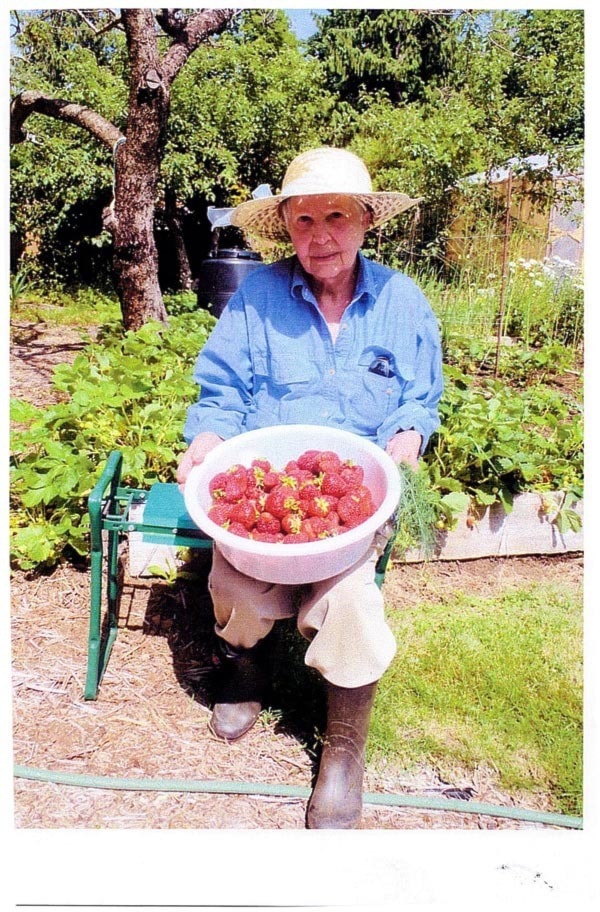This is a fishing column with a difference. I know it is not usual to show a picture of a lady with a bowl of huge strawberries and suggest it has something to do with fishing, but bear with me and I will try to convince you that it has much to do with fishing. Elaine is holding the bowl of tomato-sized strawberries she picked in our garden a couple of weeks ago, and therein is our fish story.
We have quite a large vegetable and flower garden in our backyard. It consists of eight raised beds and two small greenhouses. Some of the beds are over 20 years old, and others are more recent, like about 10 years. Most of them are framed with old planks or small logs.
Over the years, with composting and adding enriched soil, they have been built up to a depth of about 18 inches on average. These beds are now full of soft, nutrient-enhanced soil. Each year two or three will be left to fallow.
During the year when I come home with fish, prawns or crabs, all of the entrails (bones, heads or other inedible parts) will be buried in the appropriate raised beds to enrich the soil. I also put them in beds where we have taken a crop early in the season and the beds are no longer growing anything.
The process is quite simple. I have a cleaning bench in a small shed at the back of the yard where I deal with any fish I bring home. After the fish have been filleted, gutted or whatever to get them ready for the kitchen I put the refuse in a large, five-gallon plastic pail and over this I put a heavy lid to keep critters out of it until I can deal with it the next morning before any odours fill the neighbourhood.
To put it out of reach of stray animals I will put the pail on top of the cleaning bench. So far with good luck, a deer-proof fence and gated backyard we have not had a problem with the bucket being disturbed during the night.
Early the next morning I dig a trench for the amount of entrails I am dealing with. The trench will be about 18 inches deep and up to four feet long. I put the heads, bones etc. along the bottom of the trench and then carefully cover all of it with three or four layers of newspaper. By covering the material with newspaper I am convinced we are making a suitable scent block while the material rots in the soil.
The next step is to cover the trench with the soil and mark the location in the bed so that I will know where to start the next trench. You learn this little detail early in the game because ripe fish waste has an unpleasant perfume that can disturb your immediate neighbours and attract all manner of scavenging wildlife. After a year in the soil, the paper has disappeared and all that may remain of the bones would be a bone from the head of a large lingcod or chinook, and the occasional crab claw.
There is no unpleasant odour and your soil has been enriched by your fishing ventures with no waste in the process. What we are doing is making our own sea soil in our garden. Our practice of burying fish parts is nothing new or original; farmers and gardeners have been doing it for centuries. What we may be doing that is different is that we are doing it in an urban area.
If you have followed the thrust to develop sustainable living habits in various media sources you will be aware that there is a growing trend to encourage people to begin to grow some of their own food through various green initiatives.
If you happen to be a fisher person you might consider the idea of fertilizing your garden in a very old tradition– burying parts of fish. It works – Elaine's peas are at least eight feet tall (we will use a stepladder to harvest them) and this year's zucchini has all the features of a palm tree.
There is more to a day's fishing than fresh fish.
Ralph Shaw is a master fly fisherman who was awarded the Order of Canada in 1984 for his conservation efforts. In 20 years of writing a column in the Comox Valley Record it has won several awards.
